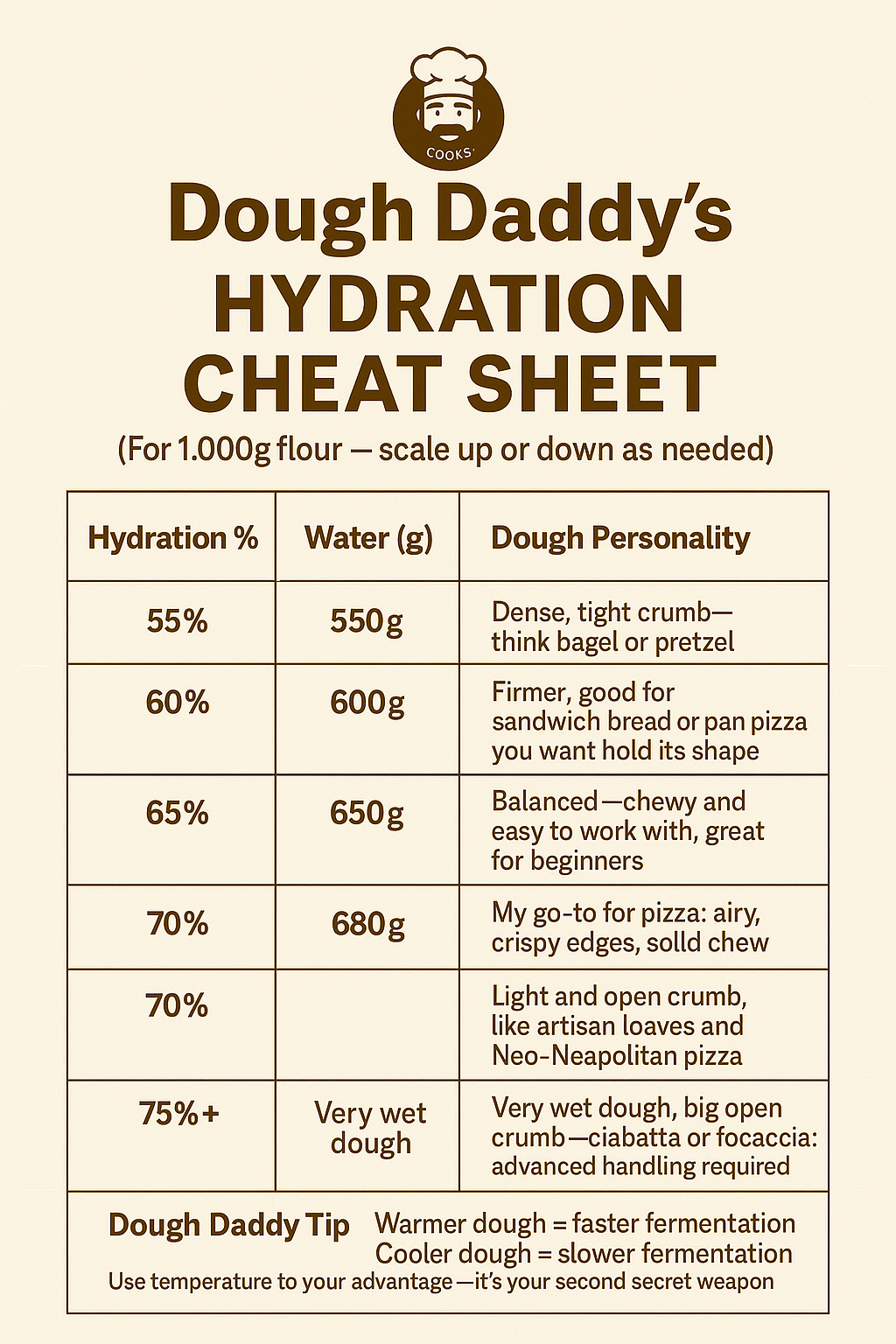Bakers percentages
Baker’s Percentages: The Secret Math Behind Great Dough
If you’ve ever watched a baker weigh flour like a chemist and wondered why they look so smug, it’s probably because they’re using baker’s percentages. This little bit of dough math is the key to consistency, no matter if you’re making one pizza or fifty.
What Baker’s Percentages Actually Are
Think of flour as the 100% baseline. Every other ingredient in your recipe is measured as a percentage of the flour’s weight. Not cups. Not “about yea much.” Weight.
• Flour: Always 100% (no matter how much you use)
• Water: Percentage of flour weight — this is your hydration level
• Salt, yeast, oil: Also percentages of flour weight
So if you use 1,000g of flour and want 68% hydration, that’s 680g of water. Want 2% salt? That’s 20g. Simple. No more guessing if your dough will feel right.
Why It’s a Game Changer
• Scales perfectly — going from a home recipe to a restaurant batch is just multiplication.
• Consistency — same texture, same rise, every time.
• Control — tweak hydration for a crispier crust or softer crumb, and know exactly what you changed.
Want more chew? Up the hydration to 70%. Want a faster rise? Bump the yeast to 0.5%.
Pro Tip from the Dough Daddy Kitchen
Don’t be afraid to experiment. The percentages are just a framework. You can swap flours, add a bit of sugar for browning, or sneak in some olive oil for tenderness, just keep the math anchored to the flour.
And remember: Weigh it. Don’t eyeball it. Your taste buds will thank you.
Quick Scaling Formula
Water weight = Flour weight × (Hydration % ÷ 100)
Example: 750g flour at 68% hydration → 750 × 0.68 = 510g water
• Warmer dough = faster fermentation
• Cooler dough = slower fermentation
Use temperature to your advantage, it’s your second secret weapon after baker’s percentages.
